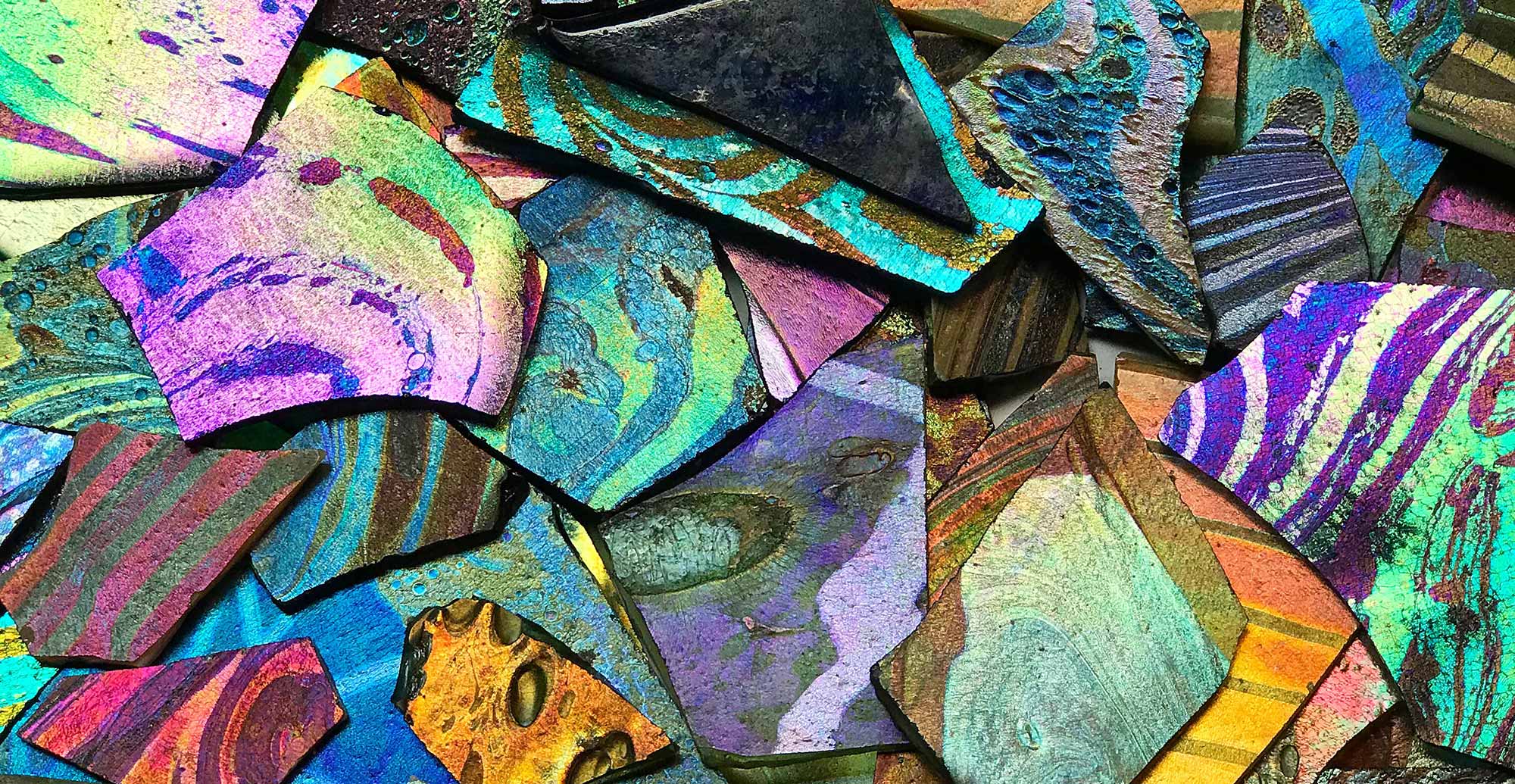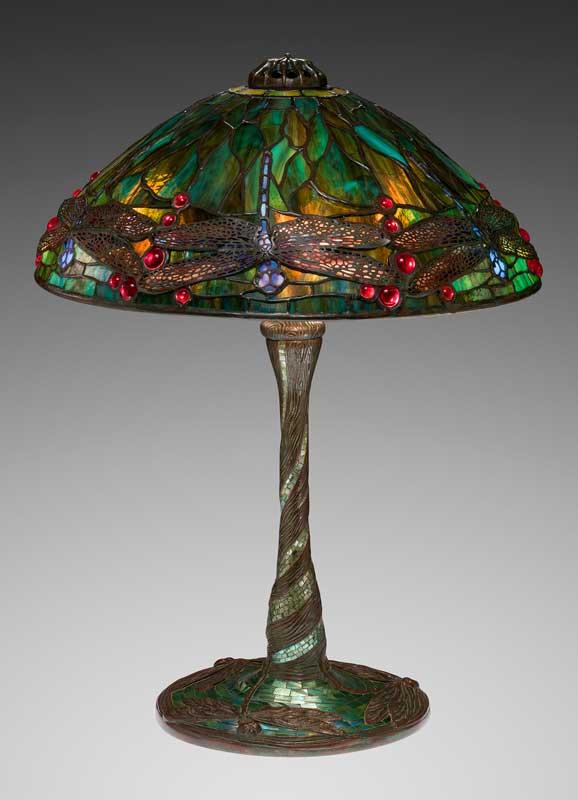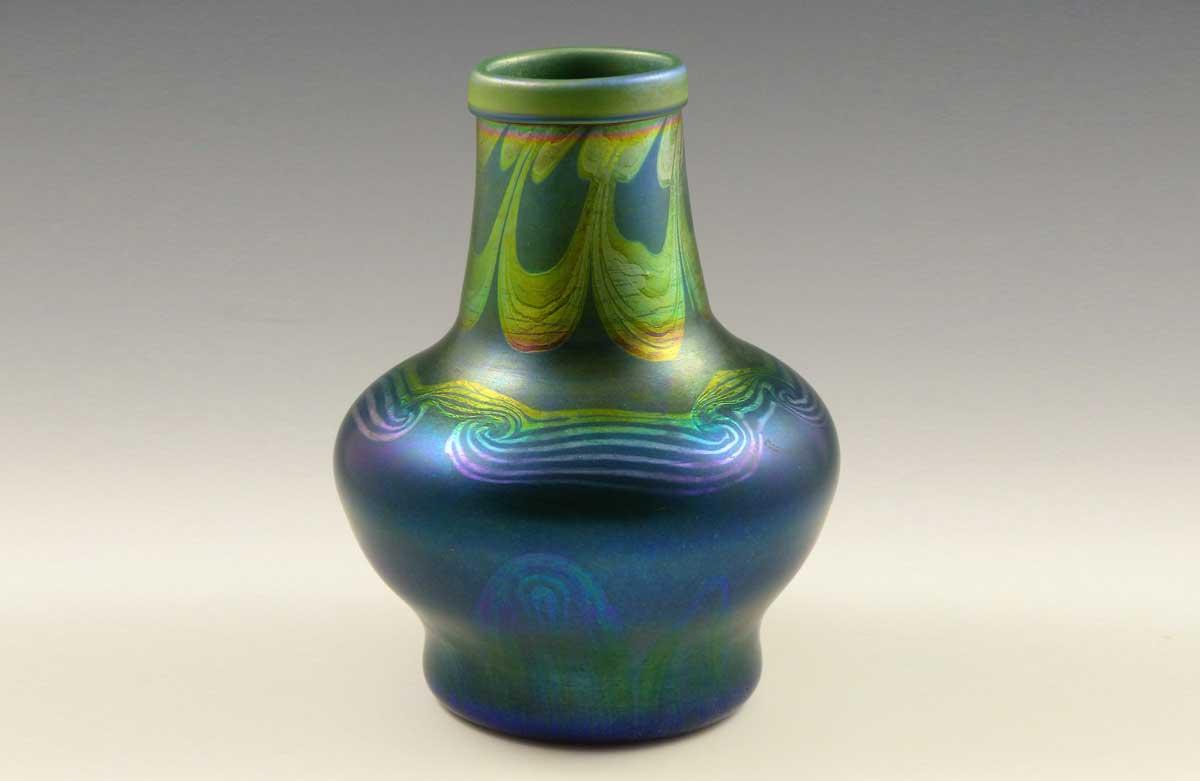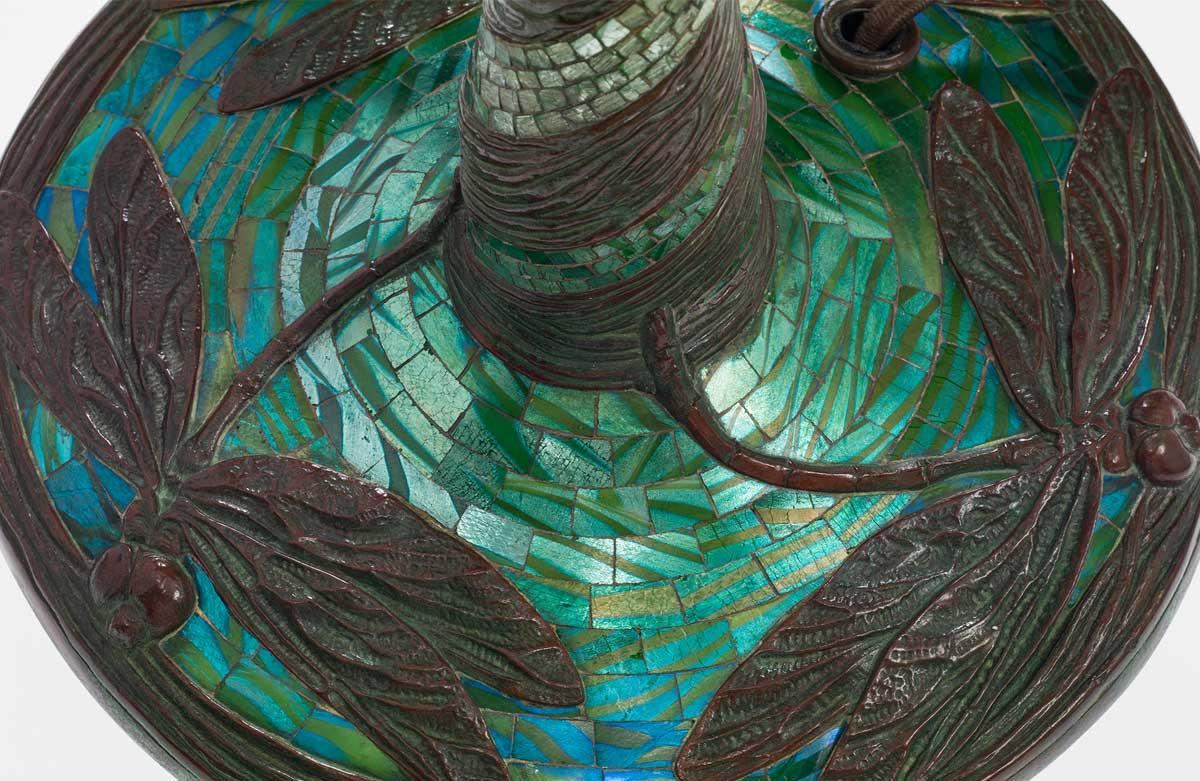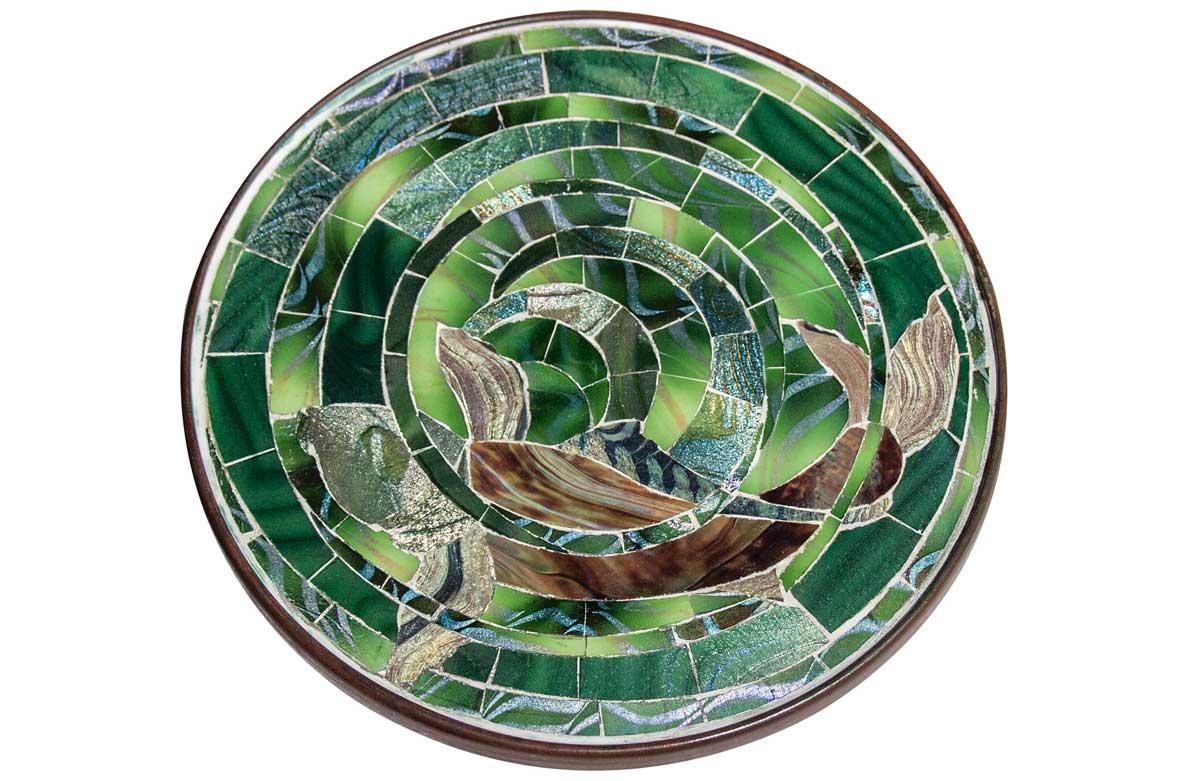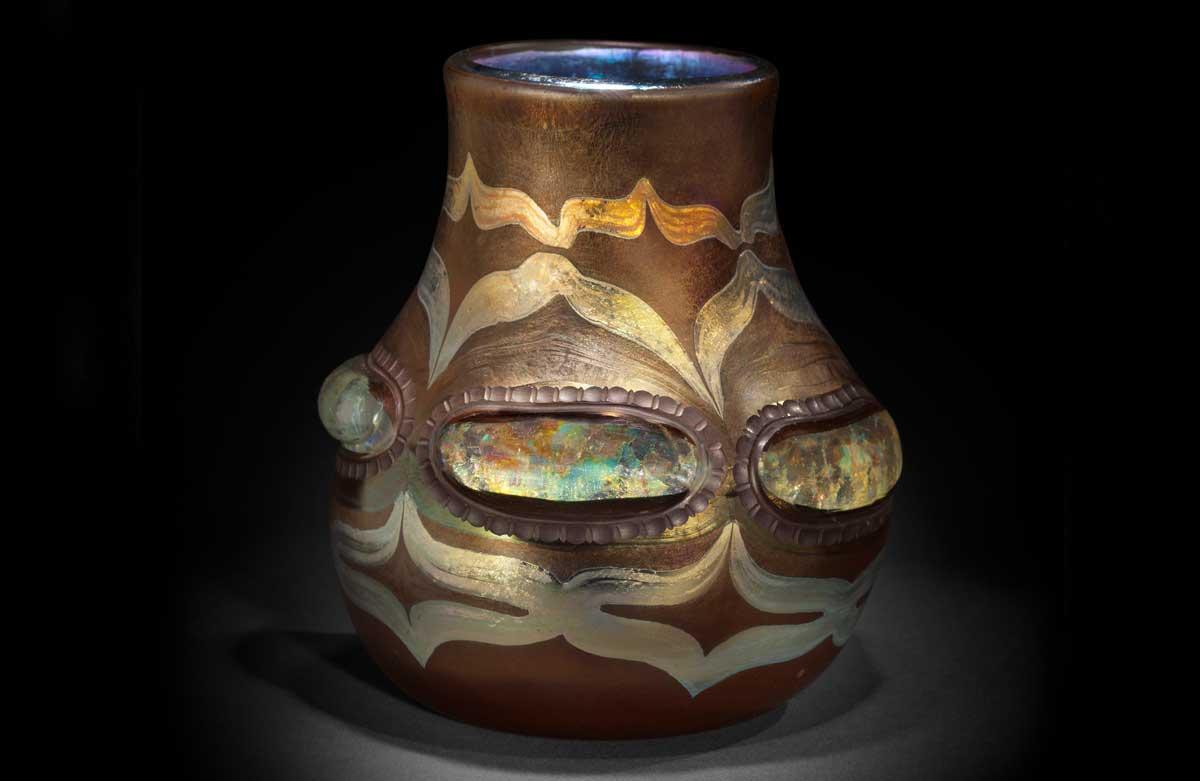Ancient Roman and Syrian glassware seems to change color in shifting light, with a rainbow of hues rippling across its surface. This iridescence was not part of the original design, but after centuries buried in the earth, the glass was weathered into thin layers. The interaction of light through this decayed surface causes a kaleidoscopic effect similar to an oil slick, soap bubble, or a butterfly’s wing.
Louis Comfort Tiffany was fascinated with this iridescence (its name derived from Iris, Greek goddess of the rainbow) and wanted to recreate the phenomenon, without the years of interment. At his furnaces in New York’s Corona, Queens—a site he purchased in 1893 partly for its seclusion from spying competitors—chemists Arthur J. Nash and Parker C. McIlhiney experimented with variations of heat and materials until they achieved a new process. Like the metallic lusterware being produced in Europe, it involved a gleaming base. They used silver nitrate that was then sprayed with a metallic salt solution. Because the color, ranging from a deep wavering blue to a luminous gold, was part of the glass, it had a vibrancy previously unseen in manufactured materials.
The iridescent glass, sometimes called Favrile, debuted to the public in 1895. It soon appeared on Tiffany’s classical tributes, like the Cypriote vases with imperfections inspired by antique glassware, as well as Art Nouveau imitations of nature. Tiffany compared the quality of this glass to “the wings of certain American butterflies, the necks of pigeons and peacocks, the wing covers of various beetles.”




